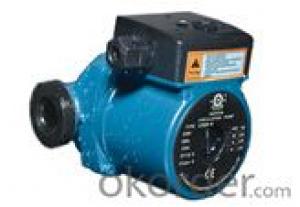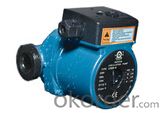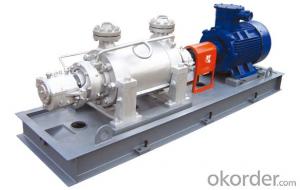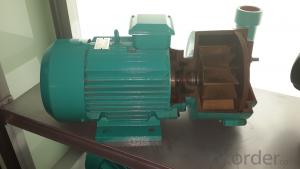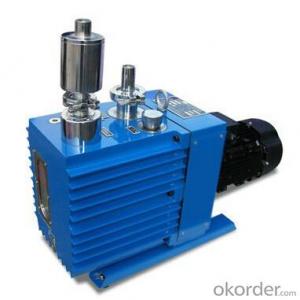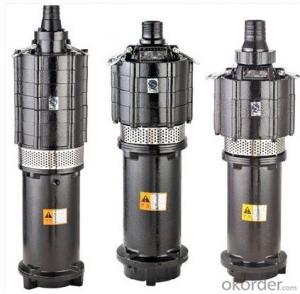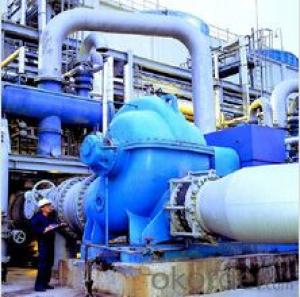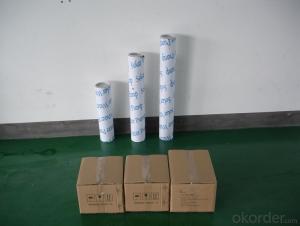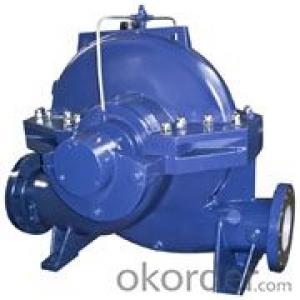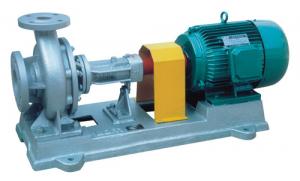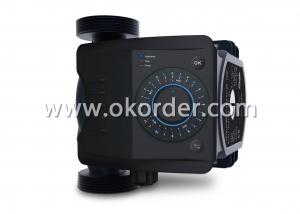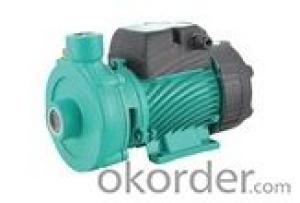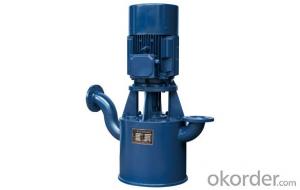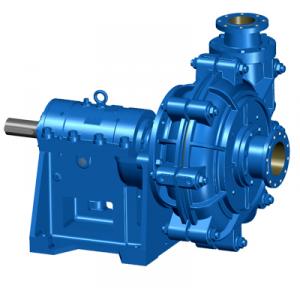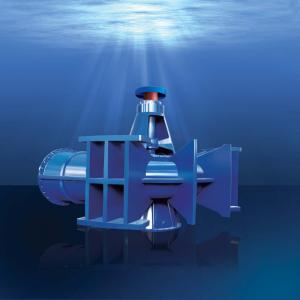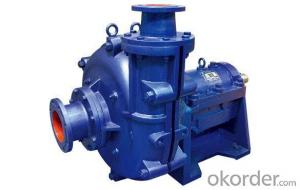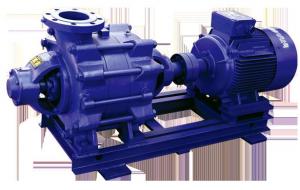Hot Water Bosster Pump
- Loading Port:
- Ningbo
- Payment Terms:
- TT OR LC
- Min Order Qty:
- -
- Supply Capability:
- 35000台 unit/month
OKorder Service Pledge
OKorder Financial Service
You Might Also Like
Specifications
hot water booster pump1.cast iron pump body,
2.low noise screened electric pump
Application:
Single-phase canned motor circulation pumps designed and produced by our specialists have these features: low noise, no leakage, ecological safety in operation, artistic appearance, easy installation and reliable operation. Pumps can be used in single tube or double tube heating system, also can be applied to city apartments, suburb villa, cooling, air-conditioning, boilers and solar systems etc.
Working conditions:
1. Pump supply: voltage 230V, frequency 50Hz, single-phase AC power. The models listed in the table can also be manufactured according to user’s requirement as 230V/60Hz or 115V/60Hz.
2. Maximum system pressure 1.0 MPa.
3. Temperature of environment: 0°C to 40°C, temperature of pumped liquid: 2°C to 110°C (except for models with automatic switch (GPD-A). In order to avoid condensed water in stator make sure that the temperature of environment is lower than liquid temperature.
4. Maintain minimum pressure at the pump inlet to avoid cavitation noise and damage on pump bearings.
5. Pumped liquid: thin, clean, non-corrosive and non-explosive does not contain any solid particles, fibers or mineral oil. Pump must not be used for delivering flammable liquids, such as diesel and gasoline. Delivering liquid of high viscosity will reduce performance of the pump, so while choosing a pump, the viscosity of the pumped liquid must be taken into account.
- Q: How much water does the water ring vacuum pump run for an hour? If there is no steam separator, does the water vaporize?
- Water ring vacuum pump is divided into many types, different sizes, different types, so water is different. As for how much water the no fixed amount, but to ensure that the water temperature is in 25 degrees, not more than 35 degrees can be.
- Q: What are the basic technical parameters of the pump?
- Two, pump head H head is the unit weight of the liquid pump pumping from the inlet of the pump (pump inlet flange) to the outlet of the pump (pump outlet flange) energy value. Effective energy is a Newtonian liquid through the pump unit is obtained. The N m/N=m, the height of liquid column pumping liquid. Habits referred to as meters. Three, the pump speed is n RPM pump unit time revolutions, represented by the symbol n, the unit is r/min. four, the pump NPSH NPSH NPSH is also called net positive suction head, said main parameters of cavitation performance. Cavitation has been used a h power of five, the power of the pump. And the efficiency of the pump is usually refers to the input power, which is the prime mover on the pump shaft power, it is also known as the shaft power, denoted by P;
- Q: Why can the centrifugal pump hold down the pressure?
- The centrifugal pump can hold pressure because of the suction pipe in the pump at the entrance of a non-return valve (valve).
- Q: Household automatic booster pump, how much pressure to work automatically, the water pressure and how many kilograms?
- With the pressure does not matter, because the pressure is small, it is necessary to boost the pump, the water pressure with the pipe flow and the size of the booster pump related
- Q: The working principle of magnetic pump
- Working principle of magnetic pumpN of the magnet (n is even) arranged according to the laws in the magnetic clutch assembly inside and outside the magnetic rotor, the magnet part consisting of magnetic coupling system. When the inside and outside the two poles in different relative displacements, two poles between the angle phi = 0, the lowest energy magnetic system; when rotates to the relative displacement is two poles, pole angle between phi = 2 pi /n, the magnetic system of magnetic energy. Remove the external force, due to the magnetic system of magnetic poles repel each other, magnetic magnet will return to the lowest energy state. So magnets in motion, driven by the magnetic rotor.
- Q: How many square cables does the submersible pump for 7.5KW need?
- According to current I=13A, it is estimated that the cable is less than 10 square meters, so the cable cross section can be calculated at the ampacity of 5A per square meter. The square section of the cable is =13/5=2.6 square. According to the specifications series, optional 2.5 square aluminum cables. When the cable is longer, it is safer to choose 4 square aluminum cables.
- Q: What is the nominal pressure of the hydraulic pump and hydraulic motor?
- Working pressure - the actual working pressure of the motor, that is, the pressure of the input oil. The difference between the motor inlet pressure and the outlet pressure should be calculated.Rated (nominal) pressure under normal working conditions, according to the test standards for continuous operation of the maximum pressure, that is, the rated pressure, more than the maximum pressure is called overloading.
- Q: Types and differences of pumps
- Classification and working principle of pump by structureClassification of pumpsInvolved pump standard product types are also very much, a centrifugal pump, metering pump, screw pump, reciprocating pump, hydraulic pump, submersible pump, oil pump, water pump, pressure test pump, vortex pump, cryogenic pump, vacuum pump, roots pump, molecular pump, gear pump, mud pump, corrosion-resistant pump deep well pump, water pump, mixed flow pump, axial flow pump, boiler feedwater pump, liquid pump, injection pump, chemical pump, pump plugging and no leakage pump, plastic pump, fire pump and so on, there are many. Its name is divided according to some conventional classification methods such as pump vane pump volume, pump etc., some are divided by purpose such as sewage pump, pump and other health, some names are more random as diffusion pump, liquid nitrogen pump. As long as the production of this product, with standard requirements, through a certain application and approval procedures may produce a new The standard, but sometimes the content also has a repeated cross, quite. The domestic and foreign standards, the domestic standard is more than the number of foreign standards. In general, such as centrifugal pumps are widely used, the production history of the pump more standard (total standard centrifugal pump up to more than 100). As new standard pump leakage pump this rapid development is relatively small. This paper introduces the structure and working principle of the pump according to the classification of the
- Q: When the water pump is started, why should it start when the outlet valve is closed? Thank you
- The valve opening pump is aimed at the centrifugal pump.From the power curve of the centrifugal pump, the power of the centrifugal pump increases with the increase of the flow rate; the flow curve of the centrifugal pump shows that the flow rate of the centrifugal pump decreases with the increase of the head.
- Q: What's the difference between a centrifugal pump and a centrifugal pump? What are they used for?
- Centrifugal pumps are used to transport liquids (or mixtures, waste water, waste materials) from one location to another.
Send your message to us
Hot Water Bosster Pump
- Loading Port:
- Ningbo
- Payment Terms:
- TT OR LC
- Min Order Qty:
- -
- Supply Capability:
- 35000台 unit/month
OKorder Service Pledge
OKorder Financial Service
Similar products
Hot products
Hot Searches
Related keywords
